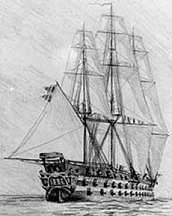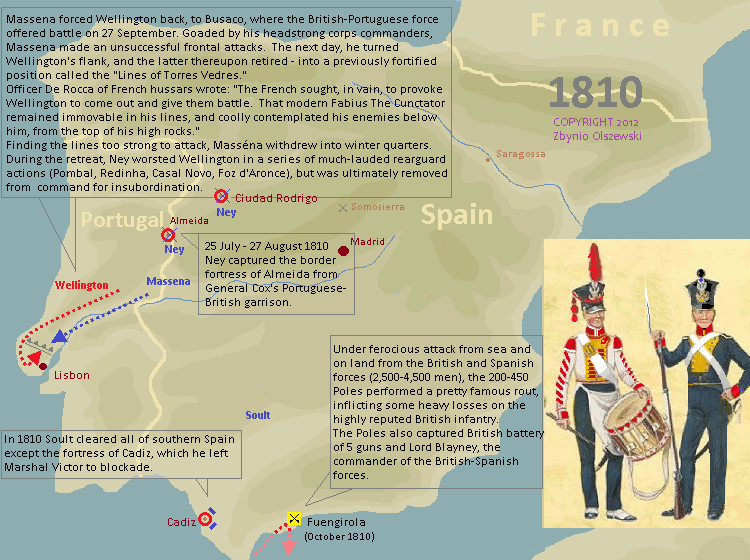|

The Poles ran out of the castle,
captured British battery and
routed "foreign" infantry battalion.
In the morning the British opened cannonade from land and sea - it broke the tower that collapsed. The British again asked Poles to surrender but Mlokosiewicz didn't even let the emissary in. The bombardement continued and the old castle went on fire. There were very many wounded and at 1:30 pm Mlokosiewicz called a war council to decide what to do next.
All officers voted for continuing the fight.
 A huge British ship-of-the-line Rodney arrived with its 74 cannons, carrying the entire I Btn./82nd Regiment of Foot. Meanwhile Blayney ordered the 89th Regiment of Foot to leave the hill near Fuengirola and march to the beach and draw rations. British battery on a hill was left guarded by Spanish troops and "foreign battalion".
A huge British ship-of-the-line Rodney arrived with its 74 cannons, carrying the entire I Btn./82nd Regiment of Foot. Meanwhile Blayney ordered the 89th Regiment of Foot to leave the hill near Fuengirola and march to the beach and draw rations. British battery on a hill was left guarded by Spanish troops and "foreign battalion".
Lord Blayney sent boats for the I Battalion/82nd Regiment of Foot to bring this unit quickly on land.
In terms of numbers it was his strongest battalion and consisted of more than 900 men.
Mlokosiewicz saw the British movements and - in the same time - noticed that 11 French dragoons were coming from the direction of Fuengirola village. The dragoons were led by Polish officer Bronisz.
 Encouraged by the tiny reinforcement Mlokosiewicz took 130 infantry and ran out of the castle. And then up the slope where stood the British battery. They were joined by French dragoons.
Encouraged by the tiny reinforcement Mlokosiewicz took 130 infantry and ran out of the castle. And then up the slope where stood the British battery. They were joined by French dragoons.
Enemy's battalion (500 men) fell apart and the Poles took 40 prisoners including Blayney's adjutant.
The Poles loaded British cannons with British ammunition and bombarded the British infantry on the beach. Blayney was shocked. He took the 89th Foot, rallied the foreign battalion, and moved against the Poles.
|


